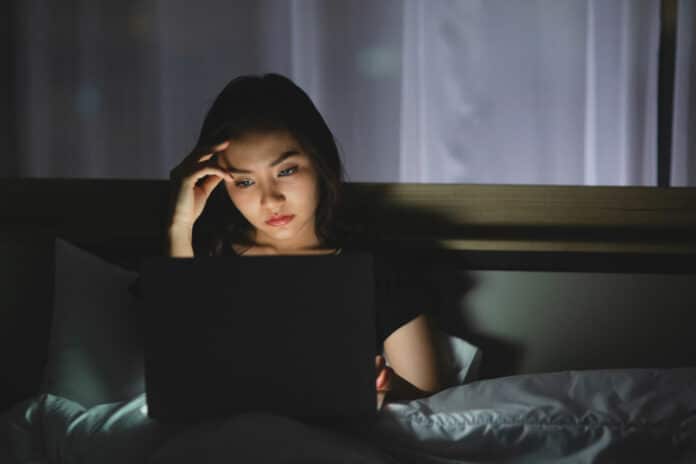The most extensive study ever about how light affects us has shown strong proof that light dramatically influences our mental health. This groundbreaking research, which involved over 85,000 participants, has shed light on the crucial role that day and night light exposure plays in developing psychiatric disorders.
Researchers from the Monash University found that too much nighttime light increases the risk of psychiatric disorders like anxiety, bipolar disorder, PTSD, and self-harm. On the positive side, more daylight can reduce the risk of psychosis.
Specifically, those exposed to a lot of nighttime light had a 30% higher risk of depression. In comparison, those exposed to plenty of daytime light had a 20% lower risk of depression. Similar patterns were observed for self-harm, psychosis, bipolar disorder, Generalized Anxiety Disorder, and PTSD.
These findings suggest that a straightforward approach, like avoiding nighttime light and getting more daylight during the day, could be a helpful way to reduce severe mental health problems.
The study, led by Associate Professor Sean Cain at Monash University in Melbourne, Australia, is published today in the journal “Nature Mental Health.”
Associate Professor Cain said, “Our findings will have a potentially huge societal impact. Once people understand that their light exposure patterns influence their mental health, they can take simple steps to optimize their well-being. It’s about getting bright light in the day and darkness at night.”
The study included 86,772 people from the UK Biobank. They examined how these individuals were exposed to light, their sleep habits, physical activity, and mental health. Notably, the impact of nighttime light exposure on mental health remained significant even when considering various factors like demographics, physical activity, season, and employment status.
Associate Professor Cain also noted that their findings held when accounting for factors like shiftwork, sleep patterns, whether people lived in cities or rural areas, and overall physical health.
He explained that “our modern lifestyle conflicts with our biological systems. Our brains are wired to function best with bright natural light during the day and darkness at night. However, nowadays, we spend about 90% of our time indoors with artificial lighting, which is often too dim during the day and too bright at night. This disrupts our body’s natural rhythms and can make us unwell.”
The largest-ever study on light exposure has provided compelling evidence of its impact on mental health. The research highlights the vital role of daylight and nighttime light exposure in developing and treating psychiatric disorders. These findings offer valuable insights for healthcare professionals, policymakers, and individuals seeking to improve their mental well-being through better light management practices.
Journal reference:
- Burns, A.C., Windred, D.P., Rutter, M.K. et al. Day and night light exposure are associated with psychiatric disorders: an objective light study in >85,000 people. Nature Mental Health. DOI: 10.1038/s44220-023-00135-8.
